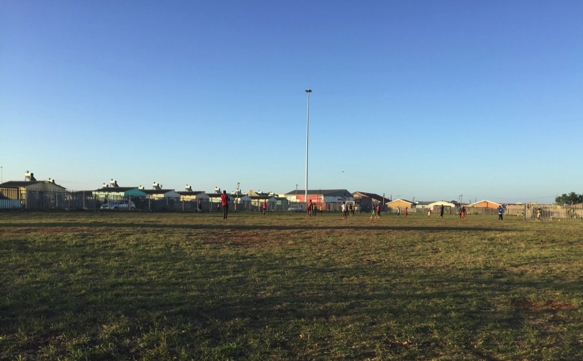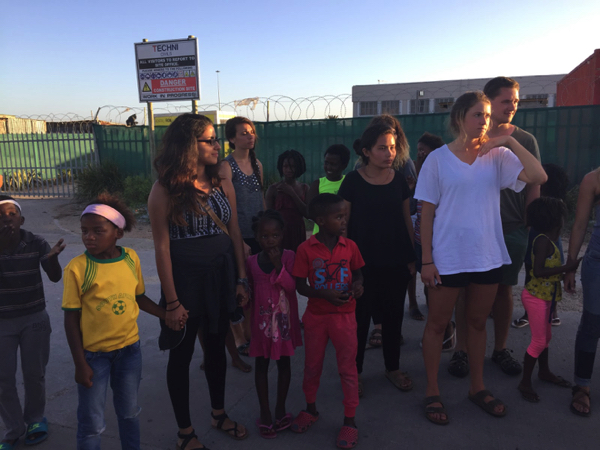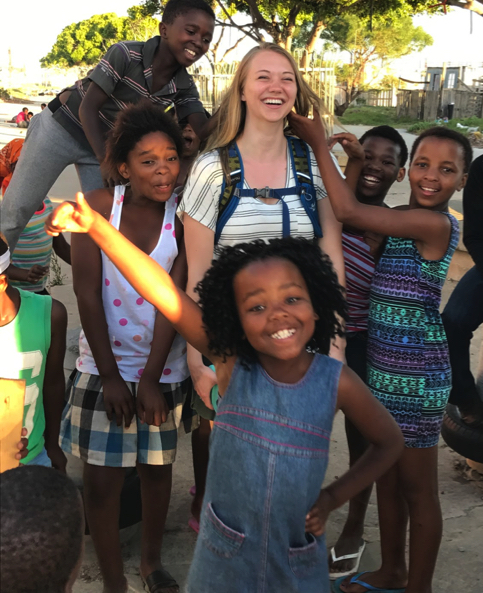by Abby Slack, Katie Page, Lilia Escobar
We spent Tuesday and Wednesday in Nelson Mandela Bay/Port Elizabeth. The city is important in South African history as many leaders of the apartheid came from the area. Through speakers and walking the Donkin Trail, we learned about how the city is working to commemorate these important leaders. Wednesday evening we visited New Brighton township. Under apartheid, black and coloured people were expelled from their homes to townships where they still often live in great poverty. New Brighton has a lot of important history and was great opportunity for learning. However, given a variety of circumstances, including sickness and exhaustion, this evening had the potential to be a challenging learning experience.
We could not have prepared for what we were to learn in New Brighton. Driving into the township, many of us were anxious to know exactly what we could expect to experience. We met up with our tour guide, a resident of the community. He directed us to an area where we could walk around and explore a few historic sites. In our walk, the first things we noticed were the stark differences in housing from central cities in South Africa. Houses were small and very close to one another. There were no high-rise buildings, many more people to see outside, and the racial makeup was primarily black (versus the coloureds and whites that we saw in Cape Town).

Photo 1. The soccer field in New Brighten, surrounded by some houses.
Whole families populated the streets outside their homes and flocks of children ran freely to greet us. The children walked with us as we learned about the township and made our way to dinner, the entire time making sure we all had a hand to hold. Every few meters we were waved at by locals of all ages. We passed a field of the local soccer club players who called out to our bus driver, “Want to join?” The township had many abandoned buildings and was itself a museum of South Africa’s history of oppression and resistance. What first felt like a new and uncomfortable space quickly changed as we were told, “You are safe here. Make yourself at home.”

Photo 2. Exploring New Brighton township with many of the children.

Photo 3. Meeting some of the children in New Brighton.
We arrived at the Red Location Backpackers Lodge and were welcomed by six of the women who run it. Saying goodbye to the children, we entered to the sound of upbeat jazz music and the smell of cooking. There were two musicians, playing the piano and saxophone. We could feel the warmth and heartfelt generosity of these people. After a day of being challenged intellectually, physically, and emotionally, it was wonderful to relax and enjoy food and music with this community. After dinner, we got up and danced with the musicians and the women who cooked for us. One of the most memorable moments was learning a South African dance. We were all laughing, dancing, and singing along with the music. It was an evening of joy and celebration.
The deep divisions in this country along racial and class lines became starkly evident when we visited New Brighton. Throughout our day, we saw disparity and poverty, but also resilience and love for life and community. We have been challenged to step outside our comfort zones and to witness and learn about the lives of others. At the end of the evening, we were truly touched by the hospitality we received and the love we felt in this community.

You must be logged in to post a comment.